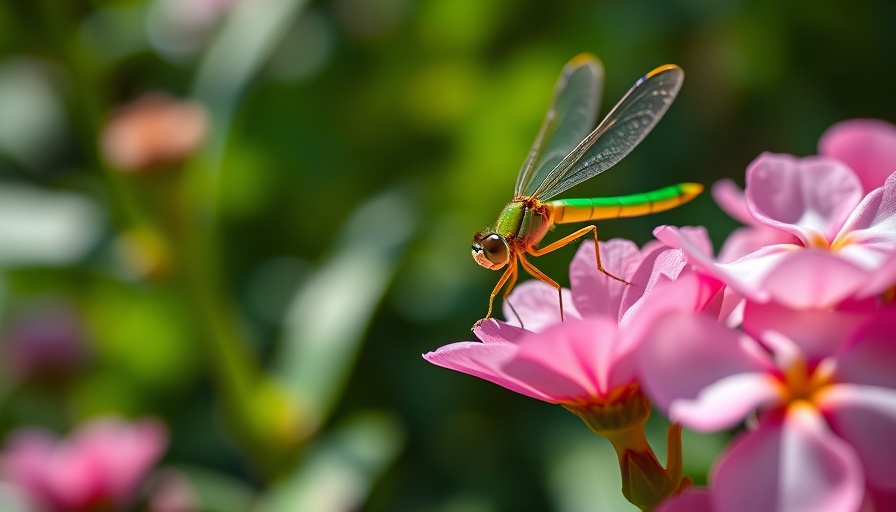
Embracing Mud Dauber Wasps: A Sustainable Addition to Your Garden
The beauty of gardening often lies not just in the vibrant blooms and lush greenery but in the incredible ecosystem it supports. One vital yet often overlooked contributor to this ecology is the mud dauber wasp. These industrious insects deserve a welcoming space in our gardens, bringing numerous benefits that make a strong case for their presence.
Understanding the Role of Mud Dauber Wasps
Mud dauber wasps play a pivotal role in controlling pest populations. Feeding primarily on spiders, they help maintain a healthy balance in your garden. In fact, the National Pest Management Association highlights that the presence of mud daubers can reduce the number of harmful pests without chemical interventions, making them invaluable allies for eco-conscious gardeners.
Creating Welcoming Spaces: Practical Tips for Homeowners
To attract mud dauber wasps to your garden, consider the following steps:
- Leaving Muddy Areas: Designate small spots where mud can gather. This encourages wasps to build their nests using the local soil, which in turn inspires a more natural landscape.
- Planting Native Flora: Native plants not only attract helpful insects but also provide a rich habitat for various pollinators and pest controllers.
- Avoiding Chemicals: Steering clear of pesticides is crucial. Chemical treatments can harm mud daubers and other beneficial species, creating an imbalance in the ecosystem.
Your Garden as a Reflection of Nature's Balance
For homeowners aged 35-55 who are already investing in sustainable practices, welcoming mud dauber wasps is an essential step. It reflects a deeper understanding of your garden's ecosystem. Research shows that gardens designed with a balance between plant life and insect inhabitants not only flourish but also create a diverse array of wildlife that can be enjoyed by homeowners and their families.
Exploring the Broader Impact of Pollinators
By integrating mud dauber wasps into your gardening efforts, you're not just benefiting your property; you're contributing to broader ecological health. A garden that supports a variety of pollinators and pest controllers like mud daubers is vital in combating the troubling decline of pollinator species worldwide. As reported by entities such as the U.S. Fish & Wildlife Service, fostering environments that support all pollinators can lead to healthier ecosystems and enhanced food security.
Common Misconceptions: Understanding Wasps
A prevalent misconception surrounding wasps is their aggressiveness. In reality, mud dauber wasps are quite docile and tend to avoid confrontation unless provoked. Their primary goal is to gather food for their young, and they don’t exhibit the same defensive behaviors as other wasp species. Understanding this can significantly reduce anxiety around their presence in your garden.
Final Thoughts: Welcoming Nature Back
As you nurture your garden, consider the far-reaching impacts of your choices. By allowing mud dauber wasps to flourish, you cultivate an ecosystem that benefits both your plants and the environment. Investing in sustainable practices not only enhances the beauty of your space but also aligns with a growing movement towards ecological stewardship.
With the growing understanding of the crucial role that beneficial insects like mud daubers play in our ecosystem, it's a call to action for homeowners to rethink their gardening strategies. Embrace the beauty and functionality of a biodiverse garden!
 Add Row
Add Row  Add
Add 




 Add Row
Add Row  Add
Add 

Write A Comment